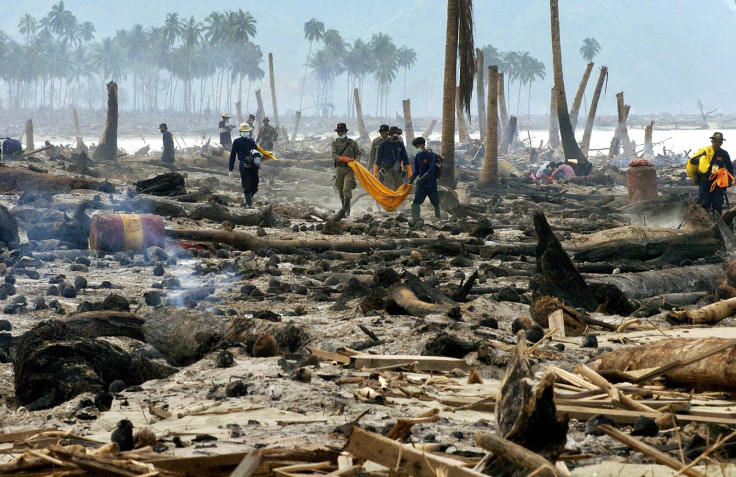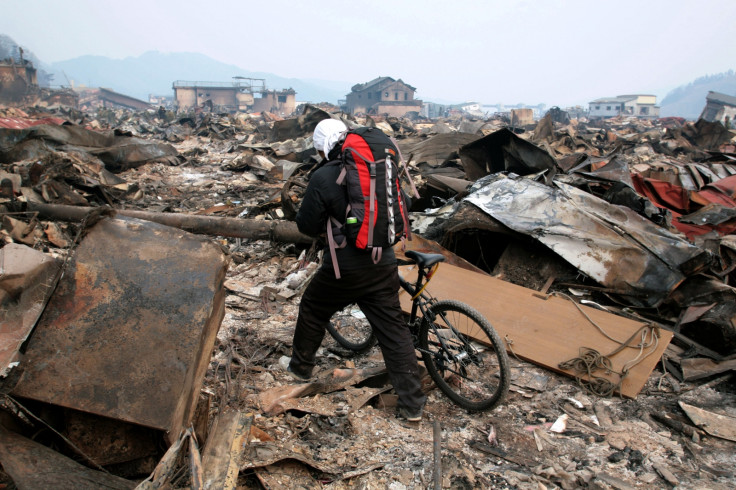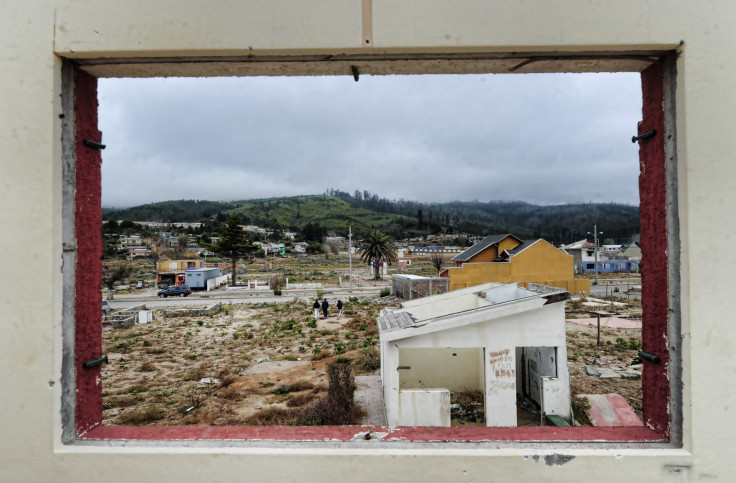The 10 biggest earthquakes in the last 100 years
'Great earthquakes' of magnitude 8 or more strike on average once a year.
Big earthquakes tend to happen at faults in the Earth's crust that are close to the surface, resulting in the largest shaking events at ground level. The biggest earthquake in history ever recorded was a 9.5 magnitude earthquake in Chile in 1960.
Earthquakes happen at the boundaries of tectonic plates, the divisions of the Earth's crust that sit on top of its liquid mantle. They can happen during subduction, which is where one plate is forced underneath another plate, or where plates slide past each other. Tectonic plate movements are usually extremely slow, at a rate of as little as 1cm a year, but during an earthquake the plates can leap metres past each other in a matter of seconds.
Earthquake recording technology goes back to the year 132 CE in China, where the philosopher Chang Heng invented the first seismometer. It was capable of detecting an earthquake 400 miles away, according to the US Geological Survey. Today, seismometers are incredibly sensitive and can trace the epicentre of the earthquake – where it originated – to tens of kilometres down into the crust.
The common modern scale for measuring earthquakes is the Moment Magnitude Scale. This isn't a linear – so a magnitude 8 earthquake isn't twice as big as a magnitude 4 earthquake. Instead it's logarithmic, which means that a magnitude 8 earthquake is 10 times larger than a magnitude 7 earthquake, which is itself 10 times larger than a magnitude 6 earthquake, and so on.
Here are the world's largest 10 earthquakes, according to the US Geological Survey.
1. 1960 Valdivia earthquake
Magnitude 9.5
19:11, 22/5/196
The most powerful earthquake ever recorded was magnitude 9.5. It struck near Lumaco, to the south of Santiago, Chile, lasting a total of about 10 minutes. The fault rupture was at a depth of about 25 km below the surface.
The exact number of deaths and casualties as a result of the earthquake is not known, but it's thought that more than 5,000 people died and more than 2 million were made homeless by the earthquake. The damage caused was estimated to be equivalent to more than $3bn (£2.5bn).
2. 1964 Great Alaskan earthquake
Magnitude 9.2
03:36, 28/3/1964
The Great Alaskan earthquake, also known as the Prince William Sound earthquake, struck southern Alaska in the US in 1964. More than 120 people died as a result of the event, according to the US National Centers for Environmental Information.

Equal joint 3: 2004 Sumatra earthquake
Magnitude 9.1
00:58, 26/12/2004
This earthquake hit off the western coast of the northern part of the Indonesian island of Sumatra. It struck at a depth of 30km below the surface, at the subduction zone of the Burma and Indian plates. The earthquake caused a devastating loss of life, with an estimated 230,000 people killed throughout Indonesia.
Equal joint 3: 2011 Tohoku earthquake
Magnitude 9.1
05:46, 11/03/2011
A total of about 15,000 people died in the wake of the 2011 earthquake at Tohoku, Japan. Tsunami waves hit within an hour of the initial earthquake shocks – on the island of Honshu, causing the Fukushima nuclear disaster. It hit at a depth of about 24km below the surface.

5. 1952 Kamchatka earthquake
Magnitude 9.0
16:58, 04/11/1952
An earthquake that began in Kamchatka, in the far-eastern peninsula of Russia. The earthquake generated a tsunami that spread all the way to Hawaii. However, neither the earthquake nor the wave when it reached Hawaii were reported to have caused any casualties due to the remote location of the earthquake's epicentre.
Equal joint 6: 2010 Maule earthquake
Magnitude 8.8
06:34, 27/02/2010
The earthquake was at the Nazca-South American plate. The earthquake was felt across 660km of the country and a total of 520 people died. The cities of Arauco and Coronel in Chile experienced the strongest shaking and the most destruction.

Equal joint 6: 1906 Ecuador-Colombia earthquake
Magnitude 8.8
15:36, 31/01/1906
The earthquake killed at least 1,000 people in coastal regions of Ecuador and Colombia. The Nazca plate was subducted underneath the South American plate, leading to a rupture zone more than 480km long.
8. 1965 Rat Islands earthquake
Magnitude 8.7
05:01, 04/02/1965
The earthquake caused a 10-metre high tsunami wave at Shemya Island, Alaska. The earthquake happened at the Alaska-Aleutian megathrust plate boundary. It ruptured a 600km fault from east to west.
9. 1950 Assam earthquake
Magnitude 8.6
14:09, 15/08/1950
Nearly 800 people were killed when an earthquake hit Assam, Tibet. The earthquake caused widespread devastation throughout the frontal regions of the north-eastern Himalaya, Assam, Arunachal Pradesh and Tibet. It resulted in landslides and a broken dam, which caused more than 500 additional deaths.

10. 2012 Northern Sumatra earthquake
Magnitude 8.6
08:39, 11/04/12
The earthquake was generated about 30 km below the ocean floor, according to the US Geological Survey. Soon after a magnitude 8.2 earthquake hit the region. Neither caused a tsunami, but moderate shaking was felt from the first earthquake in the cities of Sinabang and Meulaboh.
© Copyright IBTimes 2025. All rights reserved.






















